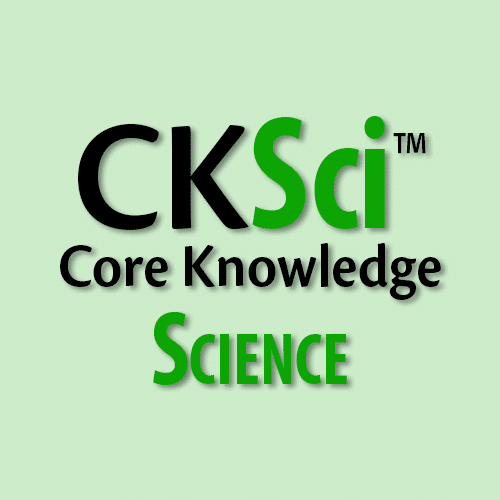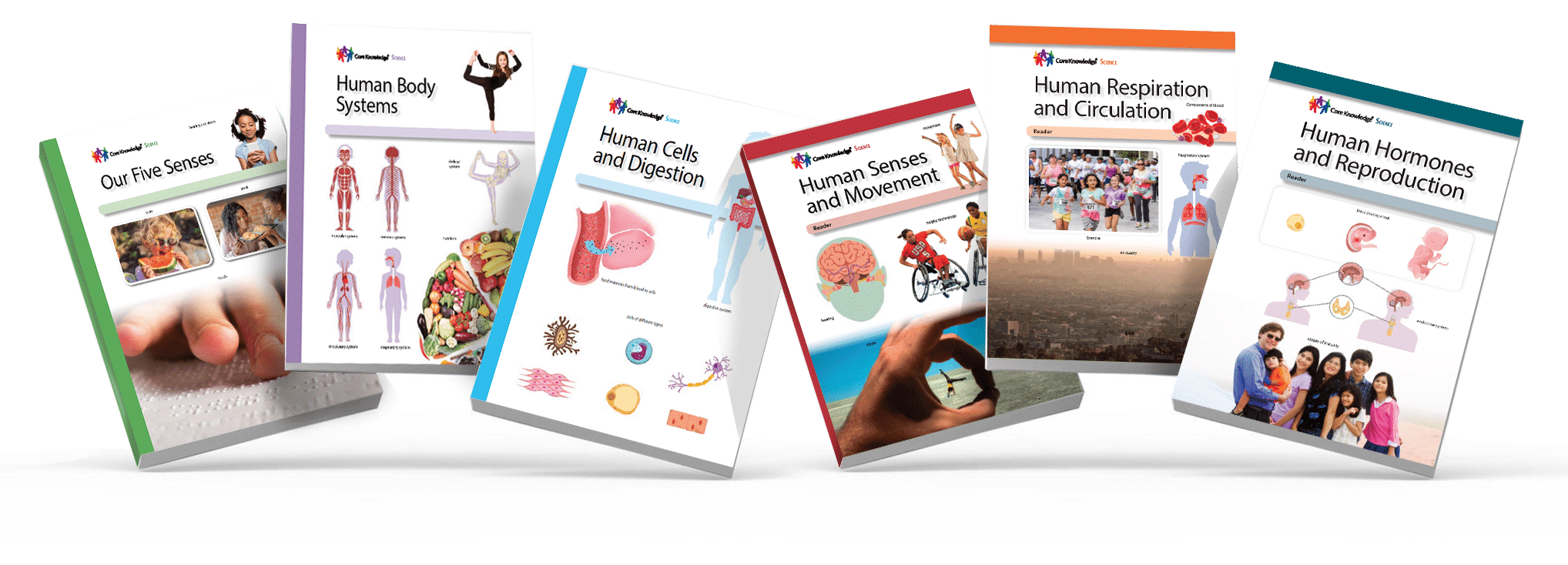
Core Knowledge Science for Grades K-5 is a full-curriculum science program. It integrates the best of the Core Knowledge approach while meeting every performance objective as well as touching on all three dimensions of the Next Generation Science Standards.
Core Knowledge Science, however, adds another discipline to the science curriculum. We at The Core Knowledge Foundation believe all students, starting in Kindergarten, should have access to the finest educational materials dealing with the structure, function, health, and health technology of the human body. This important area of study has been neglected in science classes, but a full suite of materials for the elementary grades is now available as part of CKSci.
Each grade level offers full color, beautifully designed and well written Student Readers. Additionally, comprehensive Teacher Guides support science and health teachers by offering clear teaching strategies for each lesson. This is an activity-based program that also contains integrated reading material over the course of each unit. Teacher Guides contain links to Online Resources that help bring the program to life in your classroom.
Let’s examine the Human Biology offerings and take a look at some of the program’s features.
Kindergarten

Overview
In Our Five Senses, students will identify the body’s different senses—sight, sound, smell, taste, and touch. Students will explore what body parts are involved in each of these senses, and experience how the senses help them interpret their surrounding environment. Students will also learn how we can take care of our sense, and how certain technological devices can enhance or change how the senses work.
Human Body Units: Read Alouds in Grades K-2
Colorful, meaningful, accurate art and photographs are the hallmark of Our Five Senses. The K-2 books are designed as “read alouds” meaning the teacher reads and students follow along in their own copies of the Student Readers. As students are read to, bold and scientifically accurate images reinforce the student experience. And all units discuss the medical technologies that can help us live more healthy lives.
Grade 1
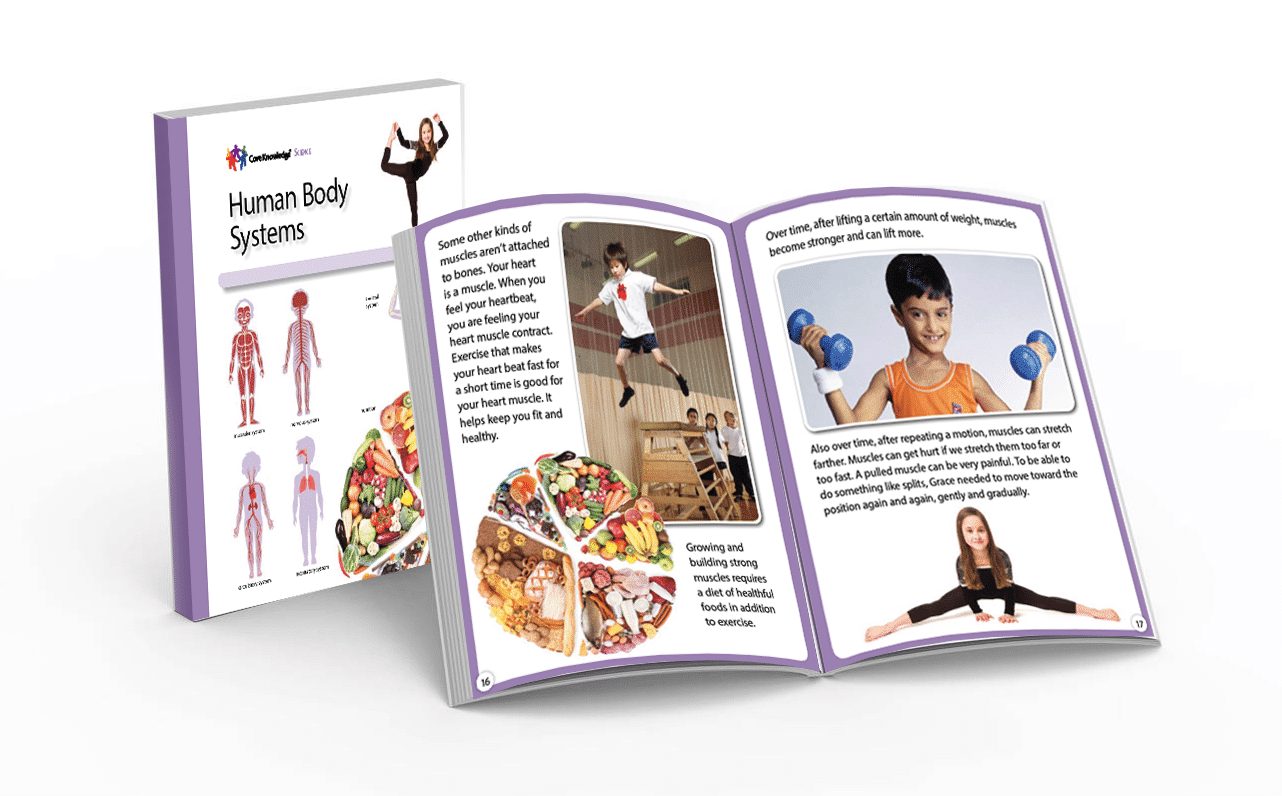
Overview
Students understand that their bodies allow them to do many things, such as move and breathe. In Human Body Systems, students explore the several systems that make up their bodies–systems that do different jobs, but work together to allow their bodies to function. Students encounter the skeletal, muscular, respiratory, circulatory, and nervous systems. They explore the different organs, tissues, and cells that are part of each system, while investigating how these systems work within their own bodies.
Human Body Units: Healthy Practices
Understanding the human body means understanding the practices that keep us healthy. In all Human Body units, students explore healthy living, such as making the best food choices and exercising to maintain optimal body system health.
Grade 2
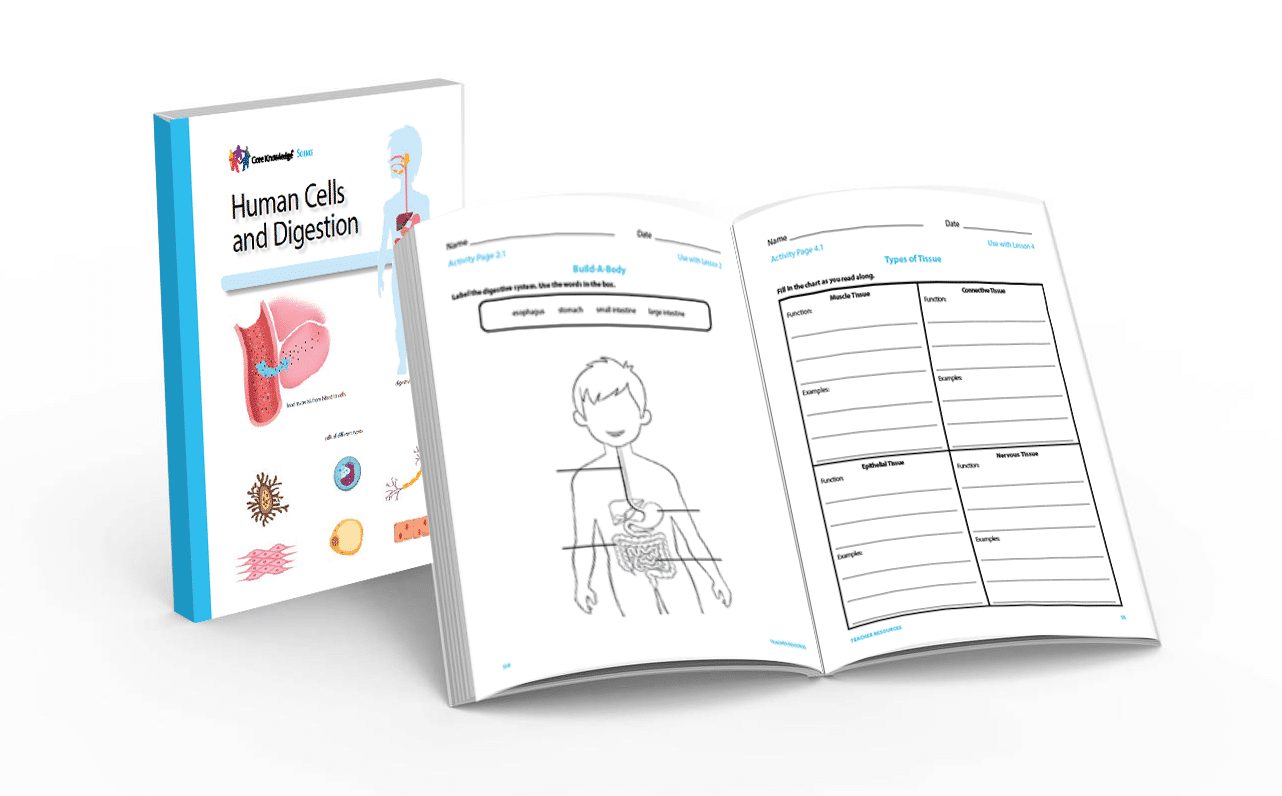
Overview
In this unit, students will explore elements of the digestive system, starting with why we feel hunger, and why we eat food. Students will explore the digestive system and its different parts, to understand the hierarchy of cells, tissues, organs, and organ systems. Students will also look at the building blocks of the body—cells. Students know they get hungry, they eat food, and they use the restroom. What students may not understand is how their bodies engage in those processes. Human Cells and Digestion enables students to explore how their bodies break food down to get nutrients and energy.
Human Body Units: Teacher Guide Worksheets
In the Teacher Guides for all of the CK Human Body units, teachers can avail themselves of worksheets that accompany the classroom activities that are the core of each lesson. Worksheets help students make sense of new information about their own digestive systems.
Grade 3
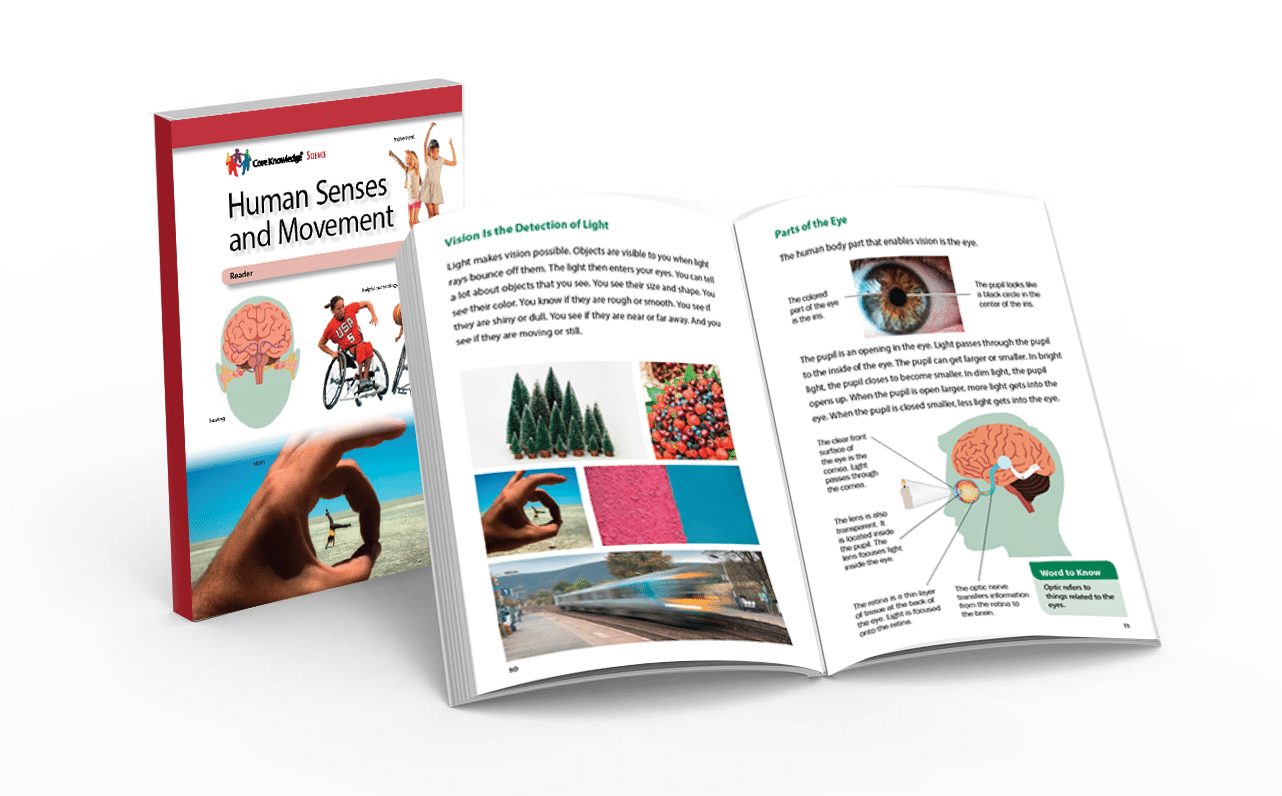
Overview
In Human Senses and Movement, students consider the body structures, systems, and functions that contribute to the ability to engage in physical activity, particularly to the ability to return a fast serve of a table tennis ball. Vision and hearing provide the perception needed for the response. The interactions of the nervous, skeletal, and muscular systems produce the body’s motion in the response. Students build on their understanding from previous grades about human body structures and their functions. They also discover adaptive technologies that assist with different aspects of impaired somatosensory function.
Human Body Units: Scientific Accuracy
The core of all CK Human Body units is accuracy in all forms of learning. By Grade 3, students begin to see clear scientific presentations that involve connecting new vocabulary to visual information. Coupling labeled diagrams to exciting visual images allows students, many of whom are not reading on their own, to connect science to the study of the human body.
Grade 4
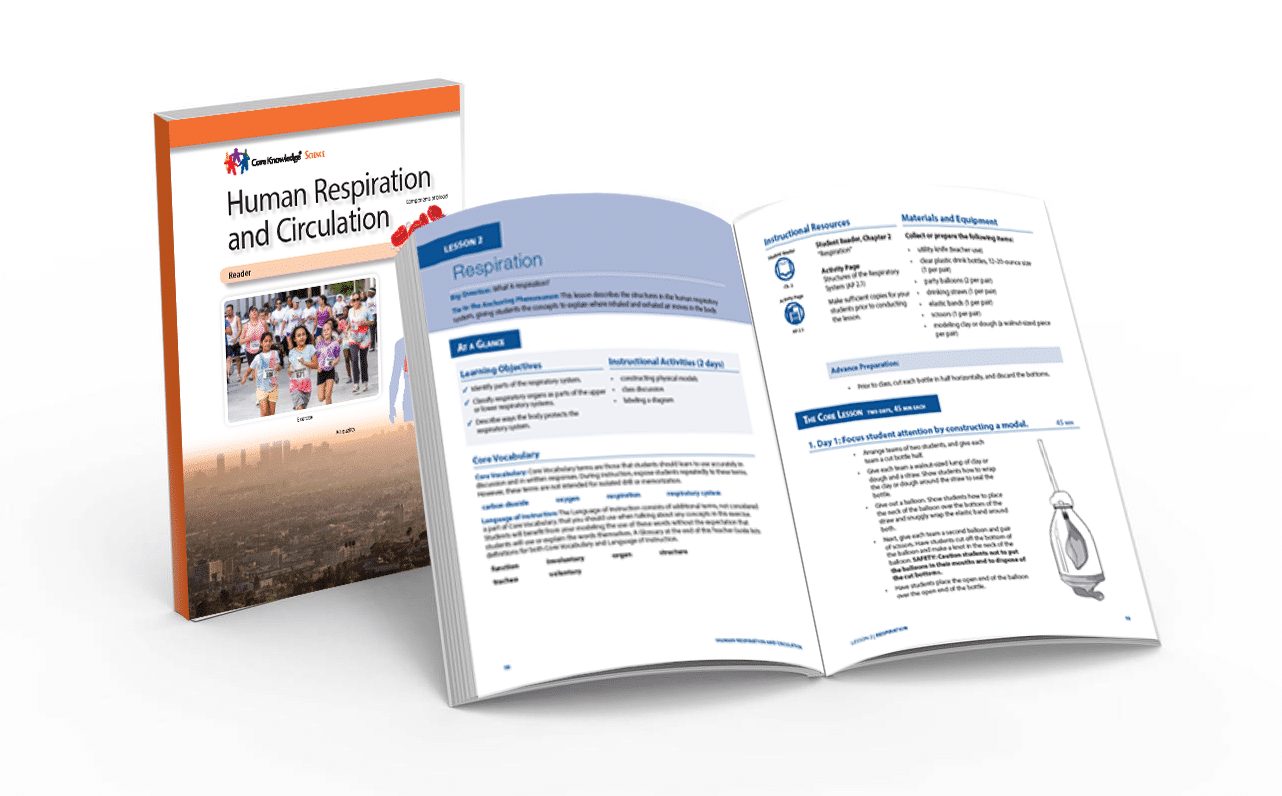
Overview
In Human Circulation and Respiration, students will consider the respiratory and circulatory systems and the role those systems play when students participate in a fun run. The circulatory system will move blood and oxygen through the bloodstream, where blood and oxygen are needed. The respiratory system will exchange the oxygen for the waste product, carbon dioxide. Students will also build on their understanding from previous grades about human body structures and their functions, as well as discover technologies that aid people when respiration and circulation are compromised.
Human Body Units: Comprehensive Teacher Guide
Each unit in the Core Knowledge Human Body program contains a thorough Teacher Guide with a wealth of background information, NGSS connections, worksheets, lesson procedures, activity guidelines, core and suggested vocabulary ideas, and all the pedagogical help a teacher needs. Download a teacher guide and explore the myriad suggestions for conducting organized, successful lessons.
Grade 5

Overview
In Human Hormones and Reproduction, students will first consider the endocrine system, the hormones released, and the hormones’ roles in human growth and development. Depending on the phase of life, the endocrine system will release hormones that trigger growth and development. With the onset of puberty, the human body will develop so that it may reproduce through sexual reproduction. Next students will trace how the human body changes from birth, through childhood, through puberty, and to adulthood.
Human Body Units: Science of the Human Body
Hormones, puberty, reproductive anatomy, and the processes of fertilization, embryo development, and birth, are all vitally important to understanding the human body. The Core Knowledge approach in all units is to convey factual information to students. From the examination of the senses in Grade K to human sexual anatomy in Grade 5, Core Knowledge Human Body units unite science and human health into one important suite of study.
